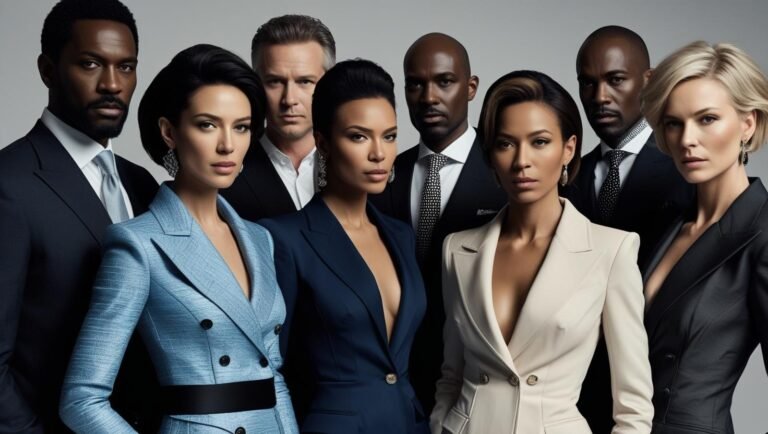In the fast-paced world of global business, economic uncertainty is the only constant. Whether it’s a recession, inflation spike, global pandemic, or geopolitical disruption, organizations must continually adapt to shifting conditions—and at the helm are CEOs, CFOs, and other C-suite executives tasked with steering the ship through turbulent waters.
Leadership in crisis isn’t just about survival—it’s about resilience, vision, and agility. This article explores how top executives navigate uncertainty, make strategic decisions under pressure, and turn disruption into opportunity, drawing lessons from recent global events.
1. Leading with Clarity During Uncertainty
In times of crisis, employees, investors, and customers look to leadership for reassurance and direction. CEOs must set the tone early, combining confidence with realism. Clear, frequent, and honest communication helps reduce anxiety and build trust across all levels of the organization.
Case Example: Arne Sorenson – Marriott International during COVID-19
When the hospitality industry ground to a halt in early 2020, former Marriott CEO Arne Sorenson delivered a transparent, empathetic video message to employees worldwide. He acknowledged the pain of furloughs while outlining Marriott’s path forward. His leadership was widely praised for its humility, honesty, and human-centric focus—critical elements of trust during a global shutdown.
2. CFOs as Strategic Stabilizers
While CEOs set the vision, CFOs are the guardians of financial stability during crises. Their role evolves from managing costs to scenario planning, capital preservation, liquidity analysis, and risk modeling.
Example: Inflation and Supply Chain Disruptions
The post-pandemic economy brought widespread supply chain bottlenecks and inflationary pressures. Smart CFOs at companies like Procter & Gamble and Apple shifted sourcing strategies, renegotiated supplier contracts, and increased inventory buffers to mitigate shocks. They also focused on maintaining margins without overly burdening consumers—demonstrating the delicate balancing act of financial stewardship during volatility.
3. Agile Decision-Making in Real Time
In a stable economy, executives can rely on long-term planning cycles. But crisis leadership demands real-time adaptation, often with incomplete data. The ability to make informed, fast decisions is a defining trait of high-performing leaders.
Example: Satya Nadella – Microsoft’s Remote Work Pivot
During the early stages of the COVID-19 pandemic, Microsoft’s leadership quickly reoriented its business around remote collaboration, promoting Teams as a core solution. Nadella accelerated product development and leveraged cloud infrastructure to meet exploding demand. The move paid off, as Microsoft’s remote work tools became essential for global business continuity.
4. Building Resilience Through Culture
Crisis leadership isn’t just operational—it’s cultural. Leaders who build resilient cultures before crises strike are better positioned to weather the storm. This includes promoting adaptability, accountability, innovation, and empathy across teams.
Example: Indra Nooyi – PepsiCo’s “Performance with Purpose”
Although her tenure as CEO ended before the pandemic, Nooyi’s long-term focus on values-driven leadership helped PepsiCo sustain morale and purpose through economic disruptions. By investing in employee well-being, sustainability, and purpose, the company built internal strength that proved essential during COVID-19 and beyond.
5. Navigating Public and Stakeholder Pressure
Modern executives must respond not only to economic factors but to social, environmental, and political crises. How a company reacts to public scrutiny or regulatory shifts can define its reputation and long-term viability.
Example: Supply Chain Ethics and ESG
During the recent global supply chain crisis, companies came under pressure to ensure ethical sourcing and environmental responsibility. Executives at firms like Unilever and Patagonia took proactive stances on transparency, labor practices, and sustainability, enhancing brand loyalty and aligning with stakeholder expectations.
6. Digital Transformation as a Crisis Response
Crisis often accelerates transformation. Executives who champion digital adoption during uncertainty set their companies up for long-term competitiveness.
Example: Shopify – Accelerating E-Commerce During COVID-19
Shopify’s leadership acted swiftly when brick-and-mortar businesses shut down. They expanded tools for small businesses to pivot online, offered relief packages, and boosted infrastructure capacity. As a result, Shopify grew exponentially and established itself as a critical player in digital retail.
7. Lessons for the Future: What Great Crisis Leaders Have in Common
From pandemic lockdowns to inflation and geopolitical conflict, the best executive leaders share several traits:
- Decisiveness with empathy: They act quickly but never lose sight of the human impact.
- Strategic communication: They keep stakeholders informed, aligned, and engaged.
- Scenario planning: They anticipate various outcomes and remain flexible.
- Long-term vision: They resist short-term panic and instead plant seeds for future growth.
- Value-driven resilience: They align actions with corporate values, reinforcing culture.
Conclusion: Turning Crisis Into Competitive Advantage
In today’s volatile global environment, economic uncertainty is a proving ground for executive leadership. CEOs and CFOs who embrace adaptability, data-driven decisions, and cultural resilience are not only able to survive disruption—but thrive because of it.
From Satya Nadella’s quick tech pivots to CFOs managing inflation with financial discipline, the lessons are clear: Great leaders don’t wait for stability—they create clarity in chaos. As future crises emerge, companies with visionary, values-driven leadership will continue to rise above the noise.

